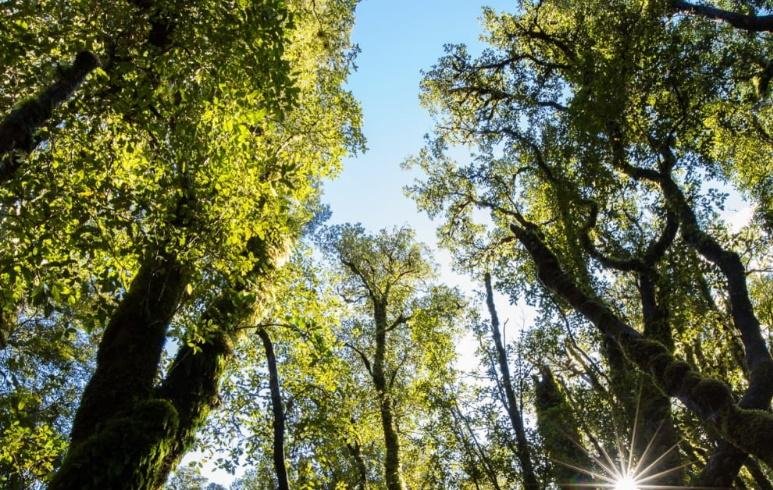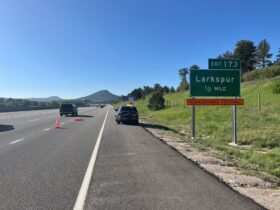Scientists may have found a big, mysterious carbon sink in the South Island.
But they caution more work is needed to solve the puzzle before New Zealand could claim the discovery as a climate win.
NIWA scientists have suggested the reason might be that native forests in the South Island are capturing much more carbon than previously thought, which could pave the way for New Zealand to use pest control and other conservation efforts to boost forest health and help meet the country’s climate targets.
The study leader, NIWA atmospheric scientist Beata Bukosa, said researchers first need to resolve the mystery of where tens of millions of tonnes of seemingly disappearing carbon dioxide are going to.
The carbon sink was found over parts of the south west South Island dominated by mature native forests, including Fiordland.
“The next thing we have to do is really identify the exact process responsible for this carbon uptake and figure out where the carbon goes,” Bukosa said.
“At the moment, with our methods we can see the signal that the carbon is basically disappearing in that region but we can’t identify where exactly that carbon goes and what is happening after it disappears.”
The study uses a different technique from the official estimates used in New Zealand’s official greenhouse gas inventory.
The official inventory uses a variety of methods, including so-called “ground up” estimates of natural carbon storage based on real measurements of trees growing in our native forests.
For the latest study, scientists from several universities and research institutes analysed carbon dioxide measurements taken between 2011 and 2020 from Wellington’s Baring Head and Lauder research station in Central Otago and used modelling to work out how that carbon dioxide was being transported.
They found much more carbon was disappearing than other methods had suggested — around 50-140 million tonnes a year more than the previous estimates, or between one and three years’ worth of all New Zealand’s carbon dioxide emissions from human activities.
Bukosa said they expected to get different results from using different methods, but the differences they found were bigger than could be explained by varying calculation methods.
“You would expect some difference just from the way the methods work…but there was still a stronger [carbon] sink in our estimates,” she said.
“Earlier estimates of how much carbon was removed by New Zealand land ecosystems ranged from a net 24 to 118 million tonnes a year.
“Our research found that New Zealand’s natural environment absorbed approximately 171 million tonnes of CO2 annually.”
As for what was behind the difference, she said the south west South Island location suggested it could be native forests but it could also be something less beneficial to nature and the climate, such as rain or landslides carrying soil – and the carbon it contains – down rivers and away from New Zealand, to be released somewhere else.
“That’s the crucial question we are trying to answer at the moment,” said Bukosa.
“The region where we found the biggest difference and the strongest sink is around Fiordland and the southwest coast of the South Island and these are also regions where we have quite a bit of erosion, which could lead to frequent landslides which transports carbon.
“The forest might be behaving differently due to climate change, or even regenerating due to pest control. We need to add up all the numbers and see how it is contributing.”
If native forests are capturing much more carbon than previously thought, it could pave the way for New Zealand to use pest control and other conservation efforts to help meet its climate targets and boost the health of native species.
Separate studies are tracking the impacts of pest control on boosting carbon storage in native forests in the South island and the East Coast of the North Island.
“Depending what the answer is, that could open up new doors on how to mitigate climate change and potentially reduce our reliance in international carbon credits,” Bukosa said.
The research grew from a 2017 pilot study suggesting native forests in Fiordland and other parts of southwest New Zealand might be sequestering up to 60% more carbon dioxide from the atmosphere than expected.
Bukosa said the latest study extended the period analysed from three to 10 years and improved the atmospheric modelling used.
“The results basically confirmed what we saw in 2017 as well, which is that it seems like there is more carbon dioxide being absorbed across New Zealand relative to what we thought before.”
Previous estimates used by the Ministry for the Environment and others to create the country’s official greenhouse gas estimates say native forests are overall almost carbon neutral – releasing about as much carbon overall as they absorb.
But those figures are uncertain, with some forests losing carbon and some forests gaining.
Bukosa said previous studies may have underestimated the amount of carbon taken up by mature indigenous forests.
Dr Andrea Brandon of the Ministry for the Environment was also involved in the study.
She said the findings “indicate there may be additional carbon uptake somewhere in the system that we are currently not tracking. We need to identify what we are missing so that we can further refine our Inventory methods to capture it.”
As well as Brandon, the NIWA scientists worked with researchers from GNS Science, Manaaki Whenua, the University of Waikato and overseas as part of a Ministry for Business, Innovation and Employment-funded Endeavour programme called CarbonWatch NZ, which ended last year.













Leave a Reply